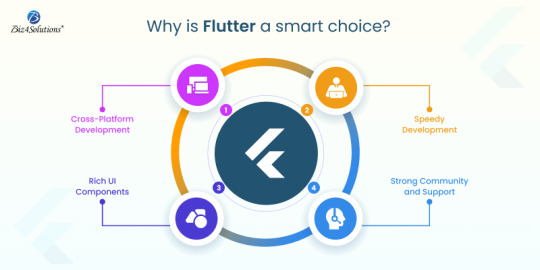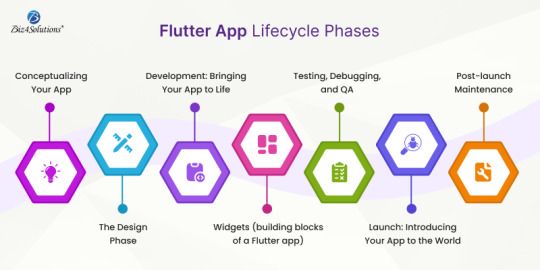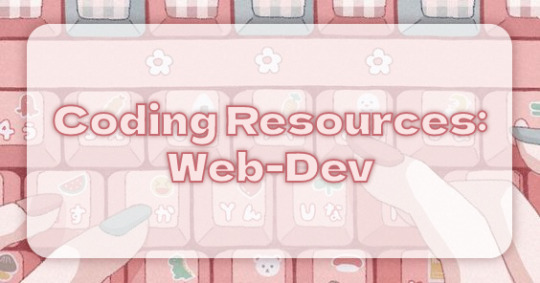#How to Become a Full Stack Web Developer in 2023
Explore tagged Tumblr posts
Text
Best Full Stack Web Developer Roadmap 2023 - Iqontech
At the heart of the Full Stack Web Developer Roadmap 2023 lies a solid foundation in programming languages such as HTML, CSS, and JavaScript. These form the building blocks of the web and allow you to create visually appealing and interactive user interfaces.
#Full Stack Web Developer Roadmap 2023#Full Stack Web Development Guide 2023#Web Development Roadmap for 2023#Full Stack Developer Skills roadmap 2023#Frontend and Backend Development 2023#Best Technologies for Full Stack Web Developers 2023#Full Stack Web Development Learning Path 2023#Latest Web Development Trends 2023#Full Stack Web Development Tools 2023#How to Become a Full Stack Web Developer in 2023
0 notes
Text
How Web Application Development Services Are Rising in Pakistan?

Web application development is growing fast in Pakistan due to a mix of local talent, global demand, and digital growth. More international companies are hiring Pakistani teams for software development services. In 2023–24, Pakistan’s IT exports reached $3.2 billion, showing progress in the tech sector. Cities like Lahore have become busy tech hubs with hundreds of software companies.
The rise of online shopping, worth $7.7 billion, also increases the need for better web apps in Pakistan. Despite a few challenges, Pakistan is quickly emerging as a trusted destination for web development services.
What Services Are Powering Pakistan’s Web Development Growth?
As Pakistan’s web development industry grows, local companies and freelancers offer various services to meet local and international needs. These services go beyond simple website development. Here's a look at the key services being offered:
1) Custom Web App Development
This service involves building a specific application customized to a client's and business needs. It means building a web app from scratch based on what a business needs. It’s not a ready-made product. Developers create designs, features, and tools tailored to the company’s specific needs and requirements.
2) Front-End Development (Client-Side)
Front-end development focuses on the visual and interactive parts of a web application that users engage with. It includes creating intuitive interfaces, layouts, animations, and responsive designs using technologies like HTML5, CSS3, JavaScript, and frameworks like React, Vue, or Angular.
3) Back-End Development (Server-Side)
This involves the behind-the-scenes logic, servers, databases, and architecture. Back-end developers write the code that powers features like authentication, data processing, and business rules. Technologies often used include Node.js, Django, Laravel, Spring Boot, and NET.
4) Progressive Web App (PWA) Development
PWAs combine the best of web and mobile experiences. They are web applications that work offline, load quickly, and can be installed on devices like native apps. PWAs use service workers, caching, and modern APIs to deliver native-like features directly from the browser.
5) E-commerce Web App Development
This includes developing online store platforms with features such as product catalogs, shopping carts, order management, user accounts, reviews, and secure payment integrations.
How These Services Are Rising In Pakistan
Several key factors drive the rapid growth of web application development services in Pakistan:
Freelancing and Startups
Pakistan’s freelancing and startup ecosystem is pivotal in driving the rise of web application development services. With a massive youth population that turns to digital careers, the country has become a global hotspot for freelance tech talent.
Global Recognition
According to a Payoneer report, Pakistan currently ranks fourth in the world among the fastest-growing freelance markets. Freelance earnings showed 47% year-over-year growth in Q2 alone, signaling the country’s strong momentum in the global digital economy.
Service Diversity
Pakistani freelancers deliver various services, including full-stack development, UI/UX design, e-commerce solutions, and custom software applications for international clients. The high demand for web-based platforms in areas like fintech, edtech, and retail has further amplified the role of freelance developers in shaping the tech ecosystem.
Youth-Led Innovation
With over 1.5 million freelancers, most under 30, Pakistan has become a breeding ground for startup culture. Many freelancers are transitioning into entrepreneurs, having small agencies or tech companies. These startups serve local businesses and attract foreign clients due to cost-effective, high-quality development services.
Digital Platforms & Marketplaces
Websites like Upwork, Fiverr, and Toptal have made it easy for Pakistani developers to work with clients worldwide. Because of this, web application development has become one of Pakistan's most popular and in-demand freelance services.
Supportive Ecosystem
Young tech lovers in Pakistan are getting a lot of help to grow. Places like Plan9 and NIC Pakistan, and programs like DigiSkills and e-Rozgaar offer training, guidance, and support. These help freelancers learn more and turn their skills into successful businesses.
Economic Impact
Freelance web development plays a significant role in growing Pakistan’s digital economy. As more international clients look for good and affordable tech services, Pakistani developers or outsourcing companies like Vertex IT Solutions are becoming a top choice in the global market. The freelancing sector has contributed approximately $350 million in foreign exchange earnings during the fiscal year 2023-24.
Conclusion
Web application development services are growing fast in Pakistan. The government is supporting the IT sector, more skilled people are joining the field, and freelancing is giving many developers a way to earn money and grow.Pakistani developers are building strong and useful apps for local and global clients. As more businesses go digital, Pakistan has a great chance of becoming a top country for web development. Companies like Vertex IT Sol, which offer complete web development services from custom app creation to API integrations and ongoing maintenance, play an essential role in this growth.
1 note
·
View note
Text
The Flutter App Development Journey from Concept to Launch
Mobile applications have become so essential to our lives that it’s almost impossible to function without them. But have you ever wondered how a mobile app idea is transformed into a full-fledged software product? This post will walk you through the app development process, focusing on Flutter, one of the most popular technologies in mobile app development.
Why is Flutter a smart choice?

With this Google-developed powerful UI toolkit, you to create stunning, natively compiled apps for mobile, web, and desktop—all from a single codebase. A report published by the popular research portal Statista in June 2024 states: ‘’ Flutter is the most sought-after cross-platform framework globally; with 46% of developers using this technology in the time period of 2019 to 2023”.
Cross-Platform Development: With Flutter, you can develop apps for both iOS and Android simultaneously, saving time and resources.
Speedy Development: Thanks to Flutter’s hot-reload feature, developers can view the changes in real time, leading to a faster development process.
Rich UI Components: Flutter comes with a vast library of customizable widgets; developers can utilize these to create visually appealing and highly responsive apps.
Strong Community and Support: Being backed by Google, Flutter boasts of a huge community, extensive documentation, and continuous updates.
Flutter App Lifecycle Phases

Take a peek through the fundamental aspects of Flutter app development.
Conceptualizing Your App
Create comprehensive wireframes or sketches to visualize the structure and user flow.
The Design Phase
Make the app look catchy and create a seamless and intuitive UX. Focus on the layout, color schemes, typography, and overall aesthetics.
Development: Bringing Your App to Life
Now that you have a solid concept and design in place, your app’s functionality is built and transformed from an idea into a working product.
Widgets (building blocks of a Flutter app)
Developers use widgets to create every component of the application right from simple buttons to complex layouts. The Dart programming language is used to write code for creating widgets and implementing features.
Built-in libraries offered by the Flutter ecosystem
bottom_navy_bar for sleek navigation bars
intro_slider for onboarding experiences
local_auth for integrating biometric authentication
fl_chart for creating dynamic charts and graphs
cached_network_image library for handling image caching and loading
Pre-built widgets offered by the Flutter ecosystem
Text for displaying text
Container for creating layout structures
Stack for layering widgets on top of each other.
Testing During the development phase
It's crucial to test the app during development to identify and resolve any issues early on. Flutter’s hot-reload feature is a game-changer in this regard, allowing developers to make quick adjustments and view the results immediately, without the need to restart the entire app.
Testing, Debugging, and QA
Developers perform unit tests, integration tests, and user acceptance testing (UAT) to identify and fix bugs, optimize performance, and ensure the app functions as expected. Flutter’s testing framework allows for efficient testing of individual widgets, app functionalities, and the entire application.
Debugging goes on throughout the development and testing phases. Flutter provides various debugging tools that help developers track down issues, optimize code, and ensure that the app runs smoothly across different devices and platforms.
Launch: Introducing Your App to the World
Deployment of the app to Google Play Store or/and Apple App Store and ASO (App Store Optimization) to promote the app to your target audience.
Post-launch Maintenance
The journey doesn’t end here. Post-launch, it’s crucial to monitor the app’s performance, gather user feedback, and release updates to improve functionality and user experience. Flutter’s flexibility makes it easier to roll out updates and new features, ensuring that your app stays relevant and competitive in the market.
Here’s an example of how to develop, test, and deploy a Flutter app
Step # 1 Configuring the Development Environment
Download the Flutter SDK Flutter’s official Flutter website and then install it.
Use an IDE (Integrated Development Environment) like Android Studio, Visual Studio Code, or IntelliJ IDEA. These IDEs have Flutter and Dart plugins available.
Set up an Android emulator or iOS simulator, or use a physical device to facilitate testing.
Step # 2 Budling a New Flutter Project
Open your IDE and use the IDE’s interface or the command line to create a new Flutter project. flutter create project_name
Now, navigate to your project directory: cd project_name
Open the project in your IDE.
Step # 3 Understanding the Project Structure
lib/main.dart is the application’s entry point.
The file pubspec.yaml manages the assets, dependencies, and other configurations of the app.
Android and iOS folders: Contain platform-specific code.
Step # 4 Developing the Application
Use Flutter’s widget tree structure to design the UI. Flutter’s MaterialApp, Scaffold, Container, Text, Image, and other widgets come in handy when crafting the app’s UI.
Manage the app’s state using tools like setState, InheritedWidget, Provider, Riverpod, or Bloc.
Modify pubspec.yaml to include the necessary libraries and packages; then run the command: flutter pub get
Step # 5 Testing
Using the IDE’s debugging tools, set breakpoints, inspect variables, and debug the app; and then, run your app on an emulator or a physical device using this command: flutter run. Write unit tests, integration tests, and widget tests to ensure QA.
Unit Testing:
Create a test file in the test/ directory, e.g., test/widget_test.dart.
Write a simple test:
import 'package:flutter_test/flutter_test.dart';
import 'package:my_flutter_app/main.dart';
void main() {
testWidgets('Check Hello, World! text', (WidgetTester tester) async {
await tester.pumpWidget(MyApp());
expect(find.text('Hello, World!'), findsOneWidget);
});
}
Now, use the flutter test command to run this test.
Integration Testing:
Create an integration test under the integration_test/ directory, e.g., integration_test/app_test.dart.
Example integration test:
import 'package:flutter_test/flutter_test.dart';
import 'package:integration_test/integration_test.dart';
import 'package:my_flutter_app/main.dart';
void main() {
IntegrationTestWidgetsFlutterBinding.ensureInitialized();
testWidgets('Integration test', (WidgetTester tester) async {
await tester.pumpWidget(MyApp());
expect(find.text('Hello, World!'), findsOneWidget);
});
}
Run the integration test using the command: flutter drive --target=integration_test/app_test.dart
Step # 6 Building the App for Release
For Android: Set up signing for your app by configuring the key.properties file.
Use the below command to create the APK or app bundle.
flutter build apk
flutter build appbundle
For iOS: Configure app signing in Xcode and build the app for iOS with this command: flutter build ios
Step # 7 Deployment
Android Deployment:
Update the android/app/build.gradle file with your app’s version and other configurations. Build the APK: flutter build apk –release Locate the APK at build/app/outputs/flutter-apk/app-release.apk and distribute it via the Play Store.
iOS Deployment:
Open the ios/ directory in Xcode. Update the app’s version, build number, and other settings in the project settings. Archive the app and distribute it via the App Store.
web Deployment:
If you’re targeting the web, build the web app: flutter build web The output will be in the build/web/ directory. Now, you can host the application on the web server of your choice.
Step # 8 Post-deployment Maintenance
Keep an eye on user feedback, monitor performance, and roll out the necessary updates whenever needed using the same process for building and deploying.
Step # 7: Deployment (CI/CD) and Ongoing Integration
Set up CI/CD pipelines for automated testing and deployment using tools like GitHub Actions, Bitrise, or Codemagic. Integrate services like Firebase Analytics and Crashlytics for monitoring the app in production.
Example GitHub Actions workflow:
name: Flutter CI
on: [push]
jobs:
build:
runs-on: ubuntu-latest
steps:
- uses: actions/checkout@v2
- uses: subosito/flutter-action@v1
with:
flutter-version: '2.5.0'
- run: flutter pub get
- run: flutter test
- run: flutter build apk --release
End Note
A Flutter app’s journey from concept to launch is a complex yet rewarding process requiring a blend of creativity, technical expertise, and strategic planning. Engaging software development professionals to guide and execute the workflow ensures a smoother and more successful outcome.
Whether you’re a startup looking to break into the app market or an established business aiming to expand your digital presence, Flutter provides the tools you need to turn your app idea into reality. So, what’s your next big app idea?
0 notes
Text
Kids build the future using JavaScript

In our digital world, coding is an essential skill that empowers individuals to shape their futures. JavaScript is an ideal choice for teaching kids to code, and this blog will delve into its benefits, fun projects, tools, tips, resources, and success stories in the world of kid-friendly coding!
Java script statistics:
JavaScript is the most popular programming language in the world, It is also the most in-demand programming language, with job postings for JavaScript developers increasing by 127% in the past year.
High demand for full-stack developers; JavaScript is crucial.
The cloud-based JavaScript development market is set to grow from $10.2B in 2023 to $24.2B in 2030.
JavaScript is regularly used by 65% of developers.
JavaScript is used on 77% of all websites.
JavaScript is used in 95% of all mobile apps.
JavaScript will be the primary language for IoT app development.
Growing demand for full-stack developers.
The rise in popularity of cloud-based development.
At what age can kids learn Java Script.
Kids as young as 10-12 can learn basic JavaScript concepts.
Simple coding exercises can be introduced to 10-year-olds to teach basic logic.
Kids around 12-14 can grasp more complex programming ideas.
Teenagers aged 15-18 can delve deeper into JavaScript for advanced topics and practical applications.
Readiness varies; some kids may show early interest and aptitude.

Why teach kids coding with java script?
Engaging and fun.
Diverse applications (web pages, games).
Explores computer science.
Valuable future skill with high demand.
Opens doors for learning, education, and careers.
Benefits of learning java script for kids.
Improved problem-solving skills.
Increased creativity.
Enhanced digital literacy.
Preparation for future careers.
Fun java script projects for kids.
Create a simple web page
Build a game
Develop an interactive animation
Create a web app
Success stories: How java script has empowered young coders.
Ryan Kavanaugh, the founder of Project, a non-profit organisation that teaches kids to code, learned JavaScript at the age of 10. He has since used his skills to create a variety of successful projects, including a mobile app that helps kids learn to code.
Alice Zhang, the founder of Codeverse, a company that develops coding games for kids, learned JavaScript at the age of 12. She has since used her skills to create a variety of successful educational games, which have been used by millions of kids around the world.
Conclusion: The future of coding and the importance of starting early.
Coding is becoming an increasingly important skill in the 21st century. It is used in a wide variety of industries, from tech to finance to healthcare. By teaching kids to code at a young age, we can give them a head start in their careers and prepare them for the future.
JavaScript is a great language to start with for kids age 10 onwards. It is relatively easy to learn and has a wide range of applications.
For more information visit our website: Fleetwood Robotics Join our WhatsApp Channel: Fleetwood Robotics WhatsApp Channel
0 notes
Text
Essential Skills for Full-Stack Developers in 2023
Hello everyone. In the fast-paced world of technology, the role of a full-stack developer continues to evolve.

1. Proficiency in Modern Front-End Frameworks:
As a full-stack developer, you should have a strong grasp of modern front-end frameworks. In 2023, this includes frameworks like React, Angular, and Vue.js. These tools help you create dynamic and responsive user interfaces, which are in high demand for web and mobile applications.
2. Mastery of Serverless Architecture:
Serverless architecture is gaining popularity for its scalability and cost-effectiveness. Full-stack developers should understand how to work with serverless platforms like AWS Lambda, Azure Functions, or Google Cloud Functions. This knowledge will enable you to build efficient and cost-effective back-end systems.
3. Microservices and Containers:
In the world of back-end development, microservices and containerization are becoming increasingly important. Knowledge of containerization tools like Docker and container orchestration platforms such as Kubernetes is essential for deploying and managing microservices.
4. GraphQL:
GraphQL is a query language for APIs that offers more flexibility compared to traditional REST APIs. Understanding and working with GraphQL is a valuable skill for full-stack developers, as it allows you to efficiently fetch and manage data for your applications.
5. Progressive Web Apps (PWAs):
PWAs are web applications that provide a native app-like experience on the web. Full-stack developers should know how to build and optimize PWAs for improved performance and user engagement.
6. DevOps and CI/CD:
Continuous Integration and Continuous Deployment (CI/CD) practices are essential for streamlining the development and deployment processes. Full-stack developers should be comfortable with tools like Jenkins, GitLab CI, or GitHub Actions to automate testing and deployment.
7. Front-end Performance Optimization:
In 2023, user experience will remain a top priority. Knowledge of front-end performance optimization techniques, such as lazy loading, image compression, and code splitting, is vital for delivering fast and efficient web applications.
8. Cross-Platform Development:
Understanding cross-platform development frameworks like Flutter and React Native is a valuable skill. These frameworks allow you to build mobile applications for both iOS and Android using a single codebase.
9. Security Best Practices:
Cybersecurity is a growing concern, and full-stack developers need to be well-versed in security best practices. This includes knowledge of secure coding, data encryption, and protecting against common vulnerabilities like SQL injection and cross-site scripting (XSS).
10. Cloud Services:
Familiarity with cloud platforms such as AWS, Azure, and Google Cloud is essential. Full-stack developers should know how to leverage these platforms for hosting, scaling, and managing their applications.
11. Soft Skills:
Effective communication, problem-solving, and collaboration are essential soft skills for a full-stack developer. Working in multidisciplinary teams, understanding business requirements, and providing solutions are equally important alongside technical skills.

To become a full-stack developer, I highly recommend ACTE Technologies. ACTE Technologies is a trusted provider of IT training and certification programs, including specialized full-stack developer training with career guidance. Whether you're aiming to boost your career or dive into the world of development, ACTE Technologies can be your partner on the path to full-stack developer training expertise.
Thank you!
0 notes
Text
Full-Stack Development Trends and Technologies You Need to Know in 2023
A full-stack development course covers both front-end and back-end web development, teaching students how to build complete web applications. It includes languages and frameworks for creating user interfaces (HTML, CSS, JavaScript, React, etc.) and server-side logic (Node.js, Python, Ruby on Rails, etc.). Students learn to work with databases, server management, and deployment, gaining a comprehensive understanding of web development from start to finish. The course typically includes hands-on projects and practical skills, enabling students to become proficient full-stack developers.
1 note
·
View note
Text
Unleash Your Coding Potential: Best Software Development Online Courses in India
Are you looking to embark on a rewarding journey into the world of software development? India's burgeoning tech industry offers a plethora of opportunities, and the first step towards a successful career begins with the right education. In this blog, we'll explore some of the Best Software Development Online Courses In India, with a special focus on the "Full Stack Web Development Course for Beginners."

Best Software Development Online Courses in India
Full Stack Web Development Course For Beginners In India: Let's start with the cream of the crop: the Full Stack Web Development Course for Beginners in India. This course is tailor-made for aspiring developers who are just starting their journey. It covers both front-end and back-end development, ensuring that you have a holistic understanding of web development.
Python for Web Development: Python is a versatile language and a must-learn for any aspiring developer. Courses like "Python for Web Development" teach you how to create dynamic web applications using Python, Django, and other cutting-edge technologies.
Mobile App Development with Flutter: Mobile apps are in high demand, and Flutter is an excellent framework to build cross-platform apps efficiently. Learn how to create stunning mobile applications through courses dedicated to Flutter development.
Machine Learning and Artificial Intelligence: For those interested in the intersection of software development and AI, courses in machine learning and AI can pave the way. These courses teach you to create intelligent applications and stay at the forefront of technology trends.
DevOps and Cloud Computing: Modern software development relies heavily on DevOps practices and cloud computing. Courses in these areas equip you with the skills to deploy, manage, and scale applications efficiently.
Why Choose Online Courses in India?
Affordability: Online courses often come at a fraction of the cost of traditional education, making them accessible to a wider audience.
Flexibility: Online courses allow you to learn at your own pace, fitting your studies around your schedule.
Quality Education: India boasts some of the best tech educators and institutions globally, offering top-notch online courses.
Global Recognition: Certifications from reputable Indian institutions are recognized worldwide, boosting your career prospects.
In conclusion, India offers a wealth of opportunities for individuals aspiring to become software developers. Enroll in the "Full Stack Web Development Course For Beginners In India" or explore other specialized courses to kickstart your journey into the exciting world of software development. With dedication and the right education, you can build a successful career in this thriving industry.
Credit:- https://qubycles.blogspot.com/2023/10/unleash-your-coding-potential-best-software-development-online-courses-in-india.html
#Best Software Development Online Courses In India#Full Stack Web Development Course For Beginners In India
0 notes
Text

How to Become a Full Stack Developer in 2023?
With the beginning of the digital era, many new professions are entering the market, including Programmers, app developers, designers, writers, social media managers, and so many more. Earlier, when internet use was little, we never thought of selecting an out-of-the-box profession. But, with evolving technology, new professions are getting in high demand. One of those professions is full stack developer. Now, you no longer need to worry about How to Become a Full Stack Developer, what is full-stack web development, and so on because in this blog, we'll see all the vital aspects of full-stack development and so on.
Read more: https://fingertips.co.in/blog/how-to-become-a-full-stack-developer-in-2023
0 notes
Text
A Detailed Introduction to Magento Front End Developers
The arena of Magento development has changed drastically since the introduction of Magento 2 on November 17, 2015. Once valid, front-end certifications and frameworks have since then become obsolete.

By 2020 the web environment started seeing an increase in websites and services that were using reactive programming. The main purpose of using Reacting programming was to create PWAs to deliver superior user interfaces on mobile devices. This is where Magento front-end Developers come into place.
Who are Magento Developers?
Magento e-commerce developers are responsible for developing, maintaining, and improving the e-commerce websites of their clients.
As of 2023, there are more than 13,000 companies and agencies that provide Magento-based solutions. Additionally, there are 300,000 trained Magento developers worldwide providing robust solutions to help e-commerce businesses excel.
Before Magento 2 hiring any Magento developer would have helped you with your development but now Magento developers have segregated into two kinds: -
Back End Developers
Front End Developers
Who are Magento Front-End Developers?
The role and responsibilities of a Magento front-end developer vary from one business to another. However, their primary role is to create a user interface on ReactJS. Additionally, they create customized Magento themes, templates and layouts. Moreover, they are also responsible for modifying the appearance of certain pages and adding design-related configurations.
You may also like to read:
5 Common Magento Performance Optimization Problems Solved
Magento Speed Test
How You Can Speed Up Magento 2
How to choose an experienced Magento Front-End Developer?
As mentioned above the number of Magento agencies and professionals is rising day by day. This is why choosing an experienced Magento Front -end developer can be a taxing procedure. However, if you keep the below-mentioned points in mind it can make the selection procedure easier: -
1. Choose an experienced React.js developer: - Choosing an experienced professional comes with its advantages. Thus, an experienced front-end developer can help you build an appropriate PWA storefront on the JS framework.
However, you should also consider hiring a professional Magento back-end developer to make sure that there are no issues on the server side of your website.
2. Choose a skilled professional: - You should ensure that the developer that you are entrusting your website to is aware of at least one of the JavaScript frameworks so that they can create UI components for web as well as mobile apps.
They should know common markup languages such as HTML and CSS. Lastly, they should be aware of Magento PWA studio tools and other Magento customization techniques that can help you in creating a PWA storefront.
3. Choose a Magento full-stack developer: - This approach is preferred by small and middle-sized businesses. A Magento full-stack developer has strong expertise in Magento 2 and knows how to work with React.js. Moreover, they have several PWA projects on their portfolio so they have a lot of knowledge about how the Magento platform works.
4. Choose Magento 2 Certified Front-End Developers: - These developers are certified by Magento and need to possess front-end expertise. They are equipped to handle UI/UX customizations and theming components.
0 notes
Text
A Step-by-Step Guide on How to Become a Full Stack Developer in 2023
Many web developers specialize in one area of development, such as front-end or back-end. It appears that becoming a Full-Stack developer is a difficult task because one must specialize in more than one language. Having full-stack development skills means you can create a complete web application from start to finish, which is a dream come true skill.
A Unicorn is a true full-stack developer. As a result, many full-stack development tools and full-stack developer institute in Gorakhpur are available to help. One cannot be perfect in all languages used on both the server and client sides with equal competency. For more details: A Step-by-Step Guide on How to Become a Full Stack Developer in 2023
0 notes
Text
Becoming a Full Stack Developer: A Guide for 2023

A full stack developer is a software engineer capable of working on both the front-end and back-end aspects of a web application. This means they possess the skills to design and create the user interface (UI) and manage the server-side logic that drives the application.
The demand for full stack developers is high, as businesses increasingly seek professionals who can handle a wider scope of responsibilities. If you're interested in a software development career, pursuing the path of a full stack developer offers an excellent starting point.
The necessary skills for becoming a full stack developer can vary based on the technologies you intend to work with. Nonetheless, some fundamental skills encompass:
HTML and CSS: These form the fundamental elements of any web page's structure and styling.
JavaScript: This programming language empowers the interactive elements of web pages.
Back-end programming language: This could involve Java, Python, Ruby, or other prevalent languages.
Database: This is where the web application's data will be stored.
Version control: Employing a system to track code modifications.
Web framework: Utilizing a pre-built code collection to expedite development. Discover the details : How To Become A Full Stack Developer In 2023
#full stack developer#Full stack web developer#Full stack developer salary#full stack developer roadmap#how to become a full stack developer#full stack development#programming software development
0 notes
Text

Beginner Freelancing Ideas to Make $250 Per Day in 2023
Freelancing is a great way to make extra money or even start a full-time career. If you’re a beginner, you may be wondering how to get started and how much money you can realistically expect to earn. You might be confused about what industry to enter, what skill to develop, and where you can make the most money with the least amount of work. So, you’re in the right place!
This blog post will go over some beginner-friendly freelancing ideas that can make you $250 per day. Additionally, we’ll offer pointers on how to set your prices, find clients, and effectively manage your time.’
Content Writing and Copywriting:
Writing content and copywriting is one of the most well-liked and in-demand freelance skills. You can contribute worthwhile written content as a freelance writer to blogs, websites, and other online publications. It is essential to have strong writing abilities, a command of grammar, and the capacity to research and write on a variety of topics if you want to succeed in this field. There are many opportunities to find clients and begin earning on websites like Upwork, Freelancer, and Fiverr.
Some popular types of Freelance writing jobs include:
Blog Posts
Articles
Web Content
Email Marketing
Copywriting
To get started as a freelance writer, you’ll need to create a portfolio of your work. You can do this by writing articles for free or by pitching your ideas to publications.
Graphic Design and Illustration:
Graphic design is another in-demand skill that can be used to freelance. If you have a knack for design, you can use your skills to create logos, websites, marketing materials, and more.
To get started as a graphic designer, you’ll need to create a portfolio of your work. You can do this by designing for free or by pitching your ideas to businesses.
Once you have a portfolio, you can start looking for clients. There are many different ways to find clients, such as:
Online Job Boards
Networking
Cold Pitching
Web Development and Design:
Web development and design are now crucial skills in the freelance world due to the rising demand for websites and an online presence. You can offer your services to build and design websites for clients if you are proficient in HTML, CSS, and JavaScript. Website creation has become simpler for non-technical people thanks to platforms like WordPress and Wix, but many people still seek professional assistance for a more personalised approach. To increase visibility and draw clients, put your skills on display on websites like GitHub and Stack Overflow that can be your Portfolio too!
Once you have a portfolio, you can start looking for clients. There are many different ways to find clients,
Fiverr.com
Upwork.com
Guru.com
Freelancer.com
Virtual Assistance:
As the virtual work trend continues to grow, virtual assistance has become a sought-after freelancing service. Many entrepreneurs, small business owners, and busy professionals require virtual assistants to handle administrative tasks, manage calendars, respond to emails, and handle customer inquiries.
Platforms like Time etc, Zirtual, and Upwork offer opportunities to find virtual assistant gigs. Excellent organizational and communication skills are key to success in this field.
Some of the tasks that VAs typically perform include:
Read the Rest of the Article at:
1 note
·
View note
Text
Top 10 Job Oriented IT Courses After Graduation In 2023
Top IT Courses After Graduation In 2023
If you are wondering what course you can take after graduating from any stream. Therefore, you are in the right place. All of these courses strongly encourage you to develop a career in corporate or the private sector.
Your professional degree gives you authority and enhances your success-related talents. If you're unsure of what to do after graduation, scroll down to learn about the top ten professional courses you may enroll in.
Top Job Oriented Courses After Graduation
We have created a list of top 10 best job-oriented courses after graduation you can consider:
1. Full-Stack Development Course
Full-Stack Developers are in high demand, especially in organizations that are primarily focused on IT. Full-stack developers are IT experts who work on both the front end and back end of an application.
Students learn how to design back-end APIs, engage with system architecture, optimize front-end code using languages like HTML, Java, and JavaScript, and comprehend networking and security foundations, and much more in a Full-Stack Development course.
The cost of this programme ranges from INR 30, 000 to INR 1,50, 000. The course length is roughly 6 - 12 months. Graduates of this programme can anticipate obtaining high-paying positions in the IT industry, with annual salaries averaging between INR 6 and 8 lakhs.
2. Digital Marketing Certification Course
In today's world, digital marketing is an essential part of marketing, and businesses are always looking for competent people to help them with their online marketing projects. A digital marketing certification course may include a variety of subjects, such as SEO, SEM, content marketing, email marketing, social media marketing, mobile marketing, PPC advertising, affiliate marketing, web analytics, and others.
Students also gain knowledge of the most recent digital marketing tools and technology, which are essential for developing successful marketing campaigns. Graduates of digital marketing programmes have the skills to produce engaging content, engage target audiences, and improve the online visibility of companies and organizations. For students who have finished digital marketing courses, continuing a career in this field becomes a viable option due to the industry's increasing need for qualified employees.
While the PG Certification in Digital Marketing and Communication takes about 6 to 5 months to complete, the average course length for the Digital Marketing Certification Programme is 5 months. These courses cost between 50,000 and 75,000 Indian rupees.
3. Web Development Course
The course, which focuses on teaching web development fundamentals to novices, includes lessons in HTML, CSS, JavaScript, and jQuery. You can learn about web design, web programming, and web content management systems in a web development course, among other things. Certified Web Developer, Certified Front End Web Developer, and Certified Full Stack Web Developer are a few of the more well-known web development credentials.
Popular web programming frameworks like Bootstrap and Angular JS are covered in Codeship Technologies' web development course. In addition to learning how to incorporate web services and third-party APIs into their projects, students will also learn how to design responsive and interactive web pages.
Students will have a firm grasp of web development at the conclusion of the course and be able to produce websites that are of a professional calibre. Students who pass the course receive assistance from Codeship Technologies with job placement, which helps them land their ideal positions in the web development sector.
4. Python Course:
Python is one of the simplest programming languages to learn, and many businesses use it. Not just in the IT industry, but also in industries like mechanical, civil, medical, financial, etc. Contrary to complete coding used in the IT sector, initiatives in these areas only occasionally incorporate coding.
Data structures, algorithms, object-oriented programming, web development, and database management are just a few of the many subjects covered in the course. Additionally, students will study well-known Python frameworks like Django and Flask.
The Python course at Codeship Technologies is taught by seasoned professionals with years of industry experience. We give each student individual attention and assist them in overcoming any difficulties they may have while learning Python.
By the end of the course, students will have a solid understanding of Python programming and will be able to apply their knowledge to real-world projects. Students who successfully finish the course will also receive job placement support from Codeship Technologies.
Learn The Essentials Of Full Stack Development Course With The Best Website Design Training Institute In Pune
5. Big Data And Hadoop Courses
Big Data is a modern technique for storing, analyzing, and using the vast amounts of data that multinational corporations utilize to formulate their policies and goals. These massive data inputs aid in the development of plans that take global target markets into account. The ability to deploy, use, and benefit from Big Data Hadoop is one of the most important skills in the IT business, and it is recognized by the Big Data Hadoop Certification. The Big Data Hadoop Certification courses combine training in Hadoop testing, Hadoop administration, Hadoop development, and Apache Spark analytics.
6. Machine Learning & AI Courses
Artificial intelligence is one of the most rapidly developing and exciting areas of computer science today. Artificial intelligence courses will provide you with the skills and information you need to keep on top of this continuously developing subject. You'll study the most recent artificial intelligence research, algorithms, and applications, as well as acquire hands-on experience with cutting-edge tools and approaches.
These technologies are used in a variety of applications, including image and speech recognition, natural language processing, and autonomous vehicles. Machine Learning & AI are rapidly growing fields with many job opportunities available for individuals with a background in computer science, mathematics, or statistics.
7. Data Science And Analytics Courses
In recent years, the most in-demand job profiles have been in data science and analytics. Given the increasing growth of the big data industry, businesses want specialists that can analyze and grasp enormous data sets in order to gain meaningful insights. Some of the topics addressed in data science and analytics courses include data mining, machine learning, statistical analysis, and data visualization.
Data Science is the collection, processing, and analysis of massive amounts of data using diverse techniques and tools with the purpose of uncovering patterns and making informed decisions. Data Scientists work in a range of areas, including healthcare, finance, and technology, to solve complicated issues and make predictions. Data Science is a fast expanding subject with several job opportunities for those with a background in computer science, mathematics, or statistics.
8. Networking Hardware And Security Courses
Networking Hardware and Security courses teach individuals how to design, install, and maintain secure computer networks. These courses cover a wide range of topics, including network architecture, routing protocols, firewalls, and intrusion detection systems. Completing a Networking Hardware and Security course can lead to a variety of career opportunities, including network administrator, security analyst, and network engineer.
9. Selenium Automation Testing Course
One of the easiest courses to gain a job in the IT industry is the one that is software testing. With frameworks like Jenkins, Cucumber, Maven, Test NG, and others, Codeship Technologies offers a course that covers everything from the fundamentals of manual testing to comprehensive automation testing.
Discover your full potential as an automation tester by enrolling in our Pune Selenium Automation Testing Course. Improve your Selenium automation abilities while gaining practical experience and knowledge of industry best practices. Enroll today to jumpstart your software testing career.
The course was created to assist you in becoming a successful Selenium automation tester. The training is comprehensive and simple to understand. It covers all of the important principles and abilities required to automate testing in various software testing environments.
10.Salesforce Training
Salesforce is the world's top CRM platform and enterprise cloud ecosystem, assisting businesses in streamlining sales, service, promotion, and other duties.
The cloud is now widely acknowledged as a worldwide economic engine that powers new ideas, business models, and industries. Cloud computing creates jobs by stimulating more IT innovation, which supports company innovation and higher revenues in local markets. Salesforce cloud technology enables customers to build cloud-hosted apps and services from any location. In a secure manner, the data is automatically saved, updated, and expanded.
Salesforce data centre apps stay secure and trustworthy because they provide a variety of benefits to consumers, such as data interoperability, flexibility, and dependability. It recommends the best implementations for organizations or enterprises based on their specific needs. To mention a few tasks, a Salesforce executive may assist with contact monitoring, marketing collaboration, performance assessment, procedure and permissions, corporate reporting and dashboards.
Conclusion:
Taking professional courses after graduation might give you with the specialized knowledge and skills required to flourish in your chosen sector. These courses provide hands-on training and career-focused knowledge, providing you an advantage in today's increasingly competitive job market. Those stated above are among the most popular and career-oriented professional courses available to recent graduates.
The courses described in this article are only a handful of the many job-related courses accessible. It is critical to conduct research on the job market and industry developments in order to choose which courses will be most advantageous to your professional aspirations.
After graduation in 2023, Codeship Technologies offers top job-oriented IT courses in Pune by including Website development course in Pune , Mobile Application Development ,Software Testing , Angular JS , UI/UX Design Course in Pune designed to prepare graduates with the skills needed to excel in the highly competitive IT market.
You can gain specialized knowledge, boost your skill set, increase your work options, and earn greater pay by enrolling in these courses. So, take the first step towards a great career by enrolling in a job-related course today to get your career started.
#IT Courses after Graduation#IT Courses#Top IT Courses#Top IT Courses in India#Best Courses after graduation#Courses After graduation
0 notes
Text
The Best Guide for New Web Developers in 2023
Have you ever thought about learning how to make websites? As the need for tech-savvy workers continues to grow, there has never been a better time to get into this exciting field than now. But what's the first step? With this guide, you can learn everything you need to know to be the best web developer right out of college in 2023. We teach you everything you need to know, from the basic skills and types of web development to the tools and technology that are changing the field. So, let's get started and learn how this fun and profitable field works.
How to get a job as a web developer
Website creation and maintenance is a specialized area that requires a unique set of skills. To be a successful web worker, you'll need to be good at the following things.
Knowledge of HTML, CSS, and JavaScript; knowledge with a database management system like MySQL or MongoDB 3) Familiarity with tools for keeping track of changes, like Git; 4) Be familiar with UI/UX design concepts for making websites that look good.
Problem-solving and critical thinking skills are important for fixing code well; 6) Ability to work as part of a team and communicate well with clients and other workers;
Web developers in Omaha need to know how to code, but they also need to know what's going on in their area. To do this, you have to keep up with what's new in the field by doing things like reading blogs, going to conferences, and taking part in workshops.
To sum up, if you want to do well as a web worker, you need to know both how to do things technically and what the latest trends are in the field. Having these skills will make you stand out as a valuable tool to any company that needs professional Omaha Web development services or graphic design firms.
There are many ways to make websites.
"Web development" is a broad term that covers a lot of different things. The different parts of web development all require different skills and information.
Front-end web development is all about the parts of a website that users can see and interact with directly. Markup languages like HTML, CSS, and JavaScript are part of front-end technologies. A front-end developer needs to be good at both design and code in order to make a nice interface for users.
Back-end web development is the process of building a website's basis, which includes the server-side code, databases, and application programming interfaces (APIs). In this area, developers are in charge of adding safety features like encrypted logins and online payment processing, as well as handling data from many different sources.
A full-stack web developer knows how to work on both the front-end and the back-end of a website. So, they are in charge of all parts of making a website, from coming up with ideas to putting it online.
There is also mobile app/web hybrid development, which focuses on making sites that work well on mobile devices by adding features like push alerts that are only available in native apps.
Web Development Omaha has many subfields, such as Shopify, WordPress, D3.js for data visualization, chatbots, and the Node.js framework for AI-powered apps.
Each of these jobs requires a different set of skills because it takes a wide range of skills to make websites that meet the needs of each customer and keep up with technology changes.
Tips for Aspiring Web Designers
It's exciting and pays well to become a web worker. Follow these rules if you want to become one:
Before you start making websites, you should first get a good idea of how programming works. The web is made up of languages like HTML, CSS, and JavaScript.
Second, choose which part of the process of making a website you want to learn more about.
Sign up for internships or work as a freelancer to learn how real clients and business software work.
Work on personal projects that show off your work as a web worker and put them in a portfolio to show off your skills.
Never stop learning. Since technology is changing so quickly these days, it's important to stay up to date by going to workshops, webinars, and other educational events.
If you follow these tips, you'll be well on your way to becoming a professional web developer.
Tools for making blogs are available.

As tools and technology for building websites have kept getting better, designers and programmers have been able to make sites that look better and are easier to use. ReactJS, which is a JavaScript library, is one of the most popular web development platforms. Facebook and Instagram are just two sites that use it.
Git is another important tool for web workers because it makes it easier to track changes to code and work together on projects. Also, content management systems (CMS) like WordPress and Drupal make it easy for people who aren't tech-savvy to change the content of a website.
Cascading Style Sheets (CSS) are important for making the front end of a website look good. In CSS, designers and programmers can describe anything, from fonts to colors to layouts to animations. Like React, AngularJS and Vue.js are popular JavaScript frameworks for making user interfaces that are dynamic.
Cloud hosting companies like Amazon Web Services (AWS) make it easier for web developers to get their apps to users by giving them flexibility and scalability. These technologies make it easier and faster for everyone, from beginners to pros, to make a website.
Conclusion
Becoming a web engineer is difficult and takes a lot of time. But it's an interesting field with a lot of room for improvement. You can have a good job as a web developer whether you live in Omaha or Tokyo.
0 notes
Text
Coding Resources | Resources ✨

There are loadddddsssss of resources to help you! Free ones too! It really all depends what do you want to code in.
Find your niche
Choosing a programming path depends on various factors, including your interests, skills, career goals, and the specific domain you want to specialize in. I know someone who started by trying a bit of everything then chose one, which was Game Development. Can't decide which route to go into?:
What are your interests? That helps niche down to a specific programming route
Looking for a job in it, look at your local job market and see what they're asking for in skills the most - some places want more Python developers whilst other places want more C# developers!
Look at this website: LINK

Now, the resources!
I will assume you would want to try Web Development first (designing, creating and maintaining websites) + I know more about web dev so I'll help there:
The roadmap to follow: LINK
FreeCodeCamp - LINK
MDN Web Docs - LINK
W3Schools - LINK
Learn HTML + CSS (video) - LINK
CSS Tutorial (video) - LINK
Codecademy - LINK
Frontend Web Development Bootcamp Course - JavaScript, HTML, CSS (video 21 HOURS LONG OF CONTENT) - LINK
CSS-Tricks - LINK
A List Apart - LINK
Web Dev Tutorials for Beginners (video playlist) - LINK
Web.Dev - LINK
Smashing Magazine - LINK
Stack Overflow - LINK
The Odin Project - LINK
Web Development for Beginners - LINK
Learn Web Development As An Absolute Beginner (Guide) - LINK
How to Learn Web Development Using Free Resources (Guide) - LINK
Web Development Full Course - Edureka (Video) - LINK
Web Development In 2023 - A Practical Guide (Video) - LINK
How to Become a Web Developer in 2023 — Everything You Need to Know (Article) - LINK

Maybe in the end building websites isn't what you want and that's totally fine! This helps you know what you don't want instead! Here are some articles to help:
23 Alternative Career Paths that Software Developers Can Grow Into - LINK
Discover 19 Exciting Career Paths for Software Engineers - LINK
13 Types of Software Development - LINK

Best of luck in your studies and any help I, and other people in the coding community here, be happy to help where we can! 💗
Does anyone have any free online resources for at least starting to teach yourself to code? I obviously have no illusions that I will become a badass tech bro from the get-go, but I wanna check if I am still as un-predisposed to it as I remember from my youth. In case there's an off-chance I am not too humanities-brained for that, after all. I love my current field, I love being an English major, but every day, I feel less and less respected or needed, especially when it comes to decent job offers, so I am growing desperate.
384 notes
·
View notes
Text
Software Development Program for Beginners in 2023

Are you interested in entering the world of software development but unsure where to start? Look no further! In this article, we will explore a comprehensive software development program designed specifically for beginners in 2023. Whether you have a passion for coding or are simply curious about the field, this program will equip you with the essential knowledge and skills to kickstart your journey.
Introduction to Software Development
This section will provide an overview of software development and its significance in today's digital age. We'll explore the role of Professional Courses, the demand for their skills, and the exciting opportunities that lie ahead for beginners in 2023.
Essential Programming Languages
To excel in software development, you need to master programming languages. This section will introduce you to the fundamental programming languages that form the backbone of software development. We'll explore the features and applications of popular languages like Python, JavaScript, and Java.
Understanding Algorithms and Data Structures
Efficient algorithms and data structures are crucial for developing high-performing software applications. In this section, we'll dive into the world of algorithms and data structures, understand their importance, and learn how to implement them effectively.
Web Development Fundamentals
Web development is a rapidly growing field with immense career potential. Here, we'll cover the basics of web development, including HTML, CSS, and JavaScript. You'll learn how to create interactive web pages and gain a solid foundation in front-end development.
Mobile App Development Basics
With the surge in smartphone usage, mobile app development has become a lucrative domain. This section will introduce you to the essentials of mobile app development, exploring platforms like Android and iOS. You'll gain insights into building user-friendly and engaging mobile applications.
Version Control with Git
Collaboration and code management are vital aspects of Full Stack software development. Git, a widely used version control system, ensures seamless collaboration among developers. Here, we'll delve into the fundamentals of Git and teach you how to effectively use this powerful tool.
Introduction to Databases
Databases are the backbone of most software applications, storing and managing vast amounts of data. In this section, we'll introduce you to the world of databases, covering concepts like relational databases, SQL, and basic database management.
Building User Interfaces
User interfaces play a crucial role in enhancing the user experience. In this section, we'll focus on creating visually appealing and user-friendly interfaces. You'll learn about UI/UX design principles and tools that will help you develop intuitive software interfaces.
Testing and Debugging Techniques
Thorough testing and effective debugging are essential for delivering high-quality software. Here, we'll explore various testing methodologies and debugging techniques that will enable you to identify and fix software issues efficiently.
Software Development Methodologies
Software development methodologies provide a structured approach to project management and software delivery. This section will introduce you to different methodologies like Waterfall and Agile, highlighting their pros and cons. You'll gain insights into choosing the right methodology for your projects.
Introduction to Agile Development
Agile development has gained popularity for its flexible and iterative approach. Here, we'll take a closer look at the Agile development framework, including Scrum and Kanban. You'll understand how to implement Agile practices to enhance productivity and deliver value to clients.
Project Management Tools
Successful software development requires effective project management. The remainder of this lesson is going to introduce you to well-known project management applications such as Jira and Trello. You'll learn how to organise, track, and collaborate upon software development projects efficiently.
Building a Portfolio
A strong portfolio showcases your skills and projects to potential employers. In this section, we'll guide you on creating an impressive software development portfolio. You'll learn how to highlight your projects, demonstrate your expertise, and stand out in the competitive job market.
Continuous Learning and Growth
Software Developer Training constitutes a continually changing field. To be competitive, you have to promote lifelong learning. We'll talk about ways for ongoing learning here, such as internet resources, coding groups, and networking opportunities. You'll learn how to cultivate a mindset of growth and advance your profession in software development.
Conclusion
Congratulations on completing this software development program for beginners in 2023! You have gained a solid foundation in various aspects of software development, from programming languages to project management. Remember to apply your knowledge and continue exploring new technologies and trends. The world of software development is vast and ever-changing, offering endless opportunities for growth and innovation.
0 notes